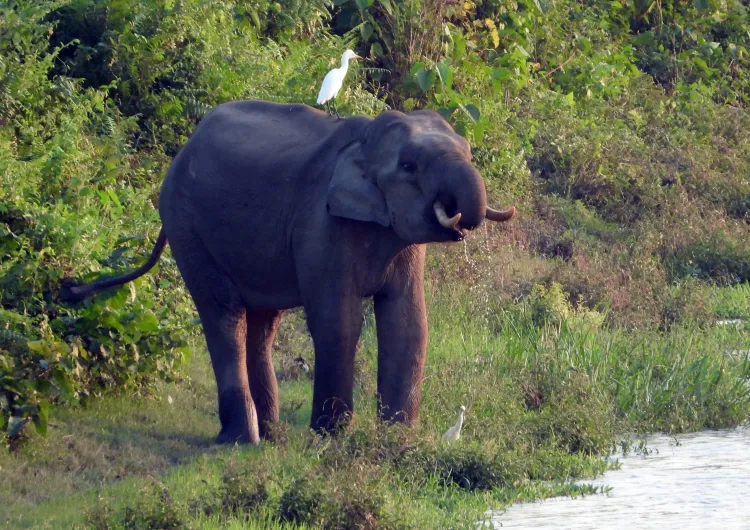What Caused the Recent Fatal Elephant Attacks in Bengal?

Synopsis
Key Takeaways
- Three individuals were killed in elephant attacks in West Bengal.
- Alipurduar district is facing rising incidents of human-elephant conflict.
- Local residents have reported increasing elephant invasions into populated areas.
- Measures like elephant corridors and fencing are being implemented.
- Community engagement is crucial for addressing safety concerns.
Kolkata, Oct 23 (NationPress) In West Bengal, three individuals, including a woman and a child, tragically lost their lives due to two distinct elephant attacks within a span of 24 hours.
The incidents occurred in the Alipurduar district located in North Bengal.
As reported by officials from the state forest department, the initial fatality happened in the Madarihat area of Alipurduar. Kader Ali, a resident of Chekamari, was on his way home when he was unexpectedly assaulted by an elephant while walking along the roadway adjacent to the Jaldapara National Park. Despite being rushed to Madarihat Rural Hospital by locals, he succumbed to his injuries shortly after.
The second tragic event unfolded early Thursday morning in the Madhya Khayerbari area, also in Alipurduar. Sonia Munda was sitting outside her home with her 18-month-old daughter, Lakshmi Munda, when an elephant emerged from the jungle, resulting in a deadly attack that claimed both their lives instantaneously.
Local residents have reported that elephants have increasingly ventured into communities near the jungle, often leading to attacks on people and the destruction of local housing. Despite repeated appeals to the state forest department for intervention to prevent these incidents, their requests have largely gone unaddressed.
According to the Union Ministry of Environment, Forest & Climate Change, a staggering total of 436 people were killed in West Bengal from 2019 to 2024.
The ongoing conflict between humans and elephants is largely attributed to diminishing forest areas and a growing elephant population.
To mitigate these conflicts, several initiatives have been implemented, including establishing elephant corridors, erecting fencing, and forming committees to manage elephant movement.










